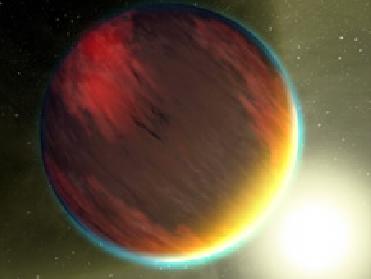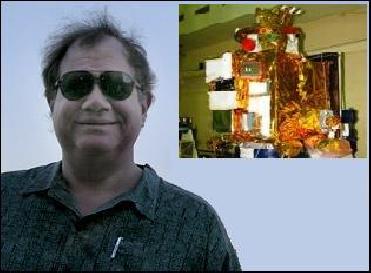
An artist's conception of the hot gas planet HD 209458b. Image credit: NASA/JPL
WASHINGTON (BNS): Researchers at NASA�s Jet Propulsion Laboratory have found the �basic life chemistry� in a giant gaseous planet in the form of water, methane and carbon dioxide molecules.
The uninhabitable hot, giant planet � HD 209458b � is bigger than Jupiter and orbits a sun-like star about 150 light years away in the constellation Pegasus. It is the second such planet harbouring the organic molecules after scientists discovered carbon dioxide around another hot, Jupiter-size planet, HD 189733b, in December 2008.
�It's the second planet outside our solar system in which water, methane and carbon dioxide have been found, which are potentially important for biological processes in habitable planets,� said researcher Mark Swain at JPL, California.
�Detecting organic compounds in two exoplanets now raises the possibility that it will become commonplace to find planets with molecules that may be tied to life,� he said.
The researchers used data from two of NASA's orbiting Great Observatories � the Hubble Space Telescope and Spitzer Space Telescope, to study HD 209458b.
Astronomers can now compare data obtained from the two planets to study their atmospheric similarities and differences. For example, the relative amounts of water and carbon dioxide in the two planets is similar, but HD 209458b shows a greater abundance of methane than HD 189733b.
�The high methane abundance is telling us something. It could mean there was something special about the formation of this planet,� said Swain.
 Previous Article
Previous Article Next Article
Next Article













The Indian Air Force, in its flight trials evaluation report submitted before the Defence Ministry l..
view articleAn insight into the Medium Multi-Role Combat Aircraft competition...
view articleSky enthusiasts can now spot the International Space Station (ISS) commanded by Indian-American astr..
view article